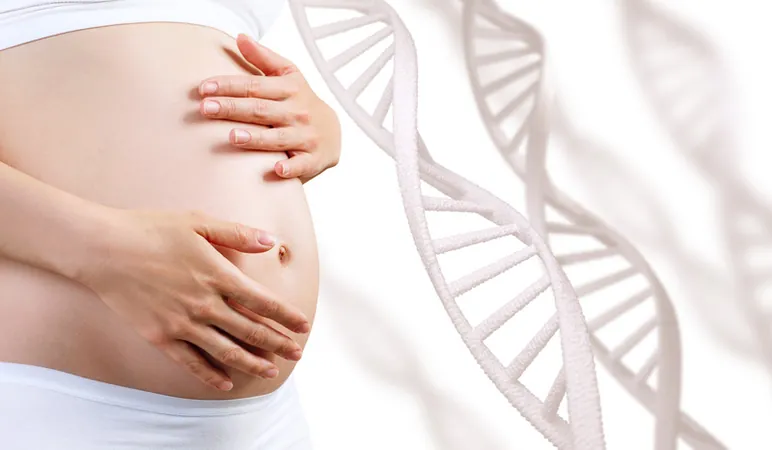
New Genetic Discoveries Unravel the Secrets Behind Rising Molar Pregnancy Rates in Women Over 35
2024-11-18
Author: Jacob
Recent breakthroughs from the Research Institute of the McGill University Health Centre (RI-MUHC) are set to revolutionize counseling for individuals dealing with infertility and complications associated with pregnancy, particularly molar pregnancies. These findings are particularly significant given the rising number of cases among women aged 35 and older.
Understanding Molar Pregnancies
Molar pregnancies, medically referred to as hydatidiform moles, are uncommon pregnancies characterized by the absence of an embryo and an abnormal overgrowth of placental tissue. In Quebec, this condition affects approximately one in every 600 pregnancies, with androgenetic moles—those containing only paternal chromosomes—showing an alarming increase in frequency with advanced maternal age, being 10 times more prevalent in older mothers. Alarmingly, these malformed pregnancies can become malignant, leading to placental cancer in up to 15% of cases.
Recent Genetic Discoveries
In a groundbreaking study published in The Journal of Clinical Investigation, researchers uncovered six new genes—FOXL2, MAJIN, KASH5, SYCP2, HFM1, and MEIOB—that, when mutated, are linked to recurrent androgenetic moles, miscarriages, and infertility. Five of these genes play crucial roles in Meiosis I, the critical cellular division process that produces eggs and sperm. Previous studies have also tied some of these genetic defects to premature ovarian insufficiency, a well-known factor contributing to female infertility, while five are also associated with male infertility issues.
Implications for Clinical Practices
Dr. Rima Slim, a leading scientist in the study, emphasized the profound implications of these findings: 'Our research indicates that recurrent androgenetic moles may signal ovarian aging. This will transform clinical practices by necessitating the evaluation of ovarian reserve in patients facing recurrent molar pregnancies.'
Building on Past Research
This study builds on previous research identifying four other genes responsible for molar pregnancies, including the NLRP7 gene discovered back in 2006, and more recent discoveries of MEI1, TOP6BL, and REC114 in 2018.
International Collaboration and Findings
A significant aspect of the research involved an international collaboration, where scientists carried out exome sequencing on 75 patients with a history of multiple hydatidiform moles. Notably, these patients exhibited no mutations in the previously identified genes connected to the condition. The study also encompassed an additional 240 patients with various reproductive failures, revealing that a concerning 14% to 28% of them carried one defective allele indicative of an increased likelihood of repeated moles.
Genetic Susceptibility
'This suggests a unique genetic susceptibility contributing to reproductive challenges among these patients, particularly as it relates to the rising trend in androgenetic moles among older mothers,' explained Dr. Slim.
Animal Models and Meiotic Defects
In order to investigate the underlying mechanisms, researchers created mouse models with deficiencies in the HFM1 gene. This model allowed the team to observe meiotic defects and connect their findings to potential pathways in human conditions. Their observations showcased how deficient mice lost all chromosomes during egg production—a breakthrough in understanding the genesis of these abnormal pregnancies.
Future Directions in Research
The identification of similarities between two distinct mouse models reinforces the potential parallels in human pregnancy behaviors, offering clearer explanations for patients experiencing molar pregnancies.
Conclusion and Hope for the Future
Since the first description of androgenetic moles in 1977, the scientific community has made great strides in understanding this exceptional condition. Today, improved genetic insights provide better frameworks for patient counseling and management, ushering in a new era of reproductive health.
As researchers continue to unravel the complex genetics behind molar pregnancies, the hope is to offer targeted interventions and increased understanding for individuals facing infertility and reproductive failures.









 Brasil (PT)
Brasil (PT)
 Canada (EN)
Canada (EN)
 Chile (ES)
Chile (ES)
 España (ES)
España (ES)
 France (FR)
France (FR)
 Hong Kong (EN)
Hong Kong (EN)
 Italia (IT)
Italia (IT)
 日本 (JA)
日本 (JA)
 Magyarország (HU)
Magyarország (HU)
 Norge (NO)
Norge (NO)
 Polska (PL)
Polska (PL)
 Schweiz (DE)
Schweiz (DE)
 Singapore (EN)
Singapore (EN)
 Sverige (SV)
Sverige (SV)
 Suomi (FI)
Suomi (FI)
 Türkiye (TR)
Türkiye (TR)